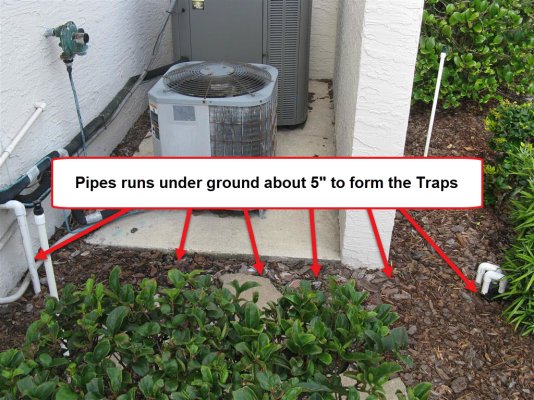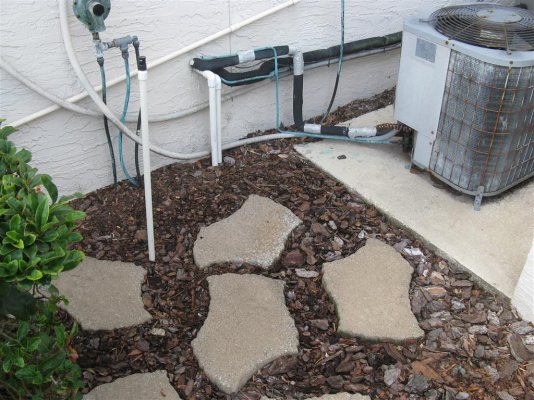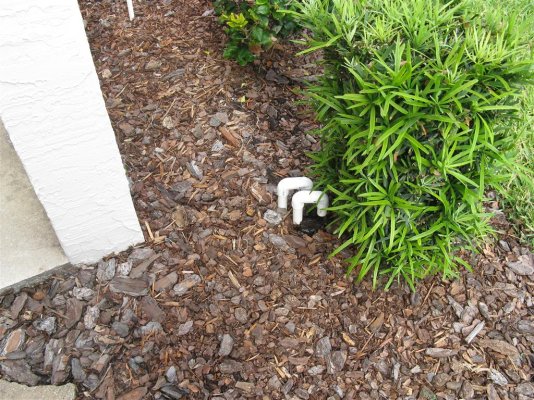target2019
Give me a museum and I'll fill it. (Picasso) Give me a forum ...
Condensation collecting in the exhaust is dripping onto the conduit below.
Why is there a brown stain along the length of exhaust pipe?
The situation needs more analysis and a permanent fix.
If a person put a pipe pointing down, without a trap, how about covering the end with screening to stop bugs.
I think that is a good solution.
I'm still wondering about the brown that runs the length of the pipe. Would a metal pipe painted with Latex do that?
The entire run that is sloping down, including the starting fitting is suspect. I would cut that out, and run new pipe and fittings, and let the condensate drip away from the electrical conduit.
Whatever is done to fix this, it will need regular maintenance in case algae builds up in there.
Just as bad is the electrical conduit. It appears to be too close to the dirt. Turn off the mains power feeding it. Remove the clamps holding it down and find a better position as far from the dirt as possible.



